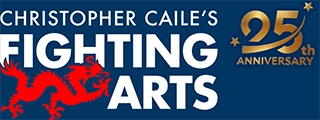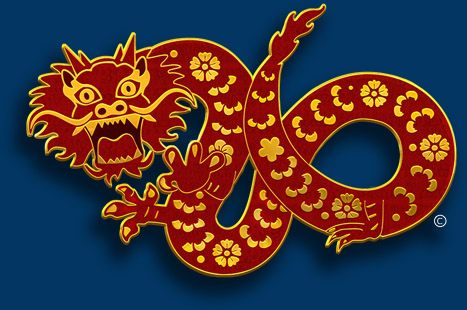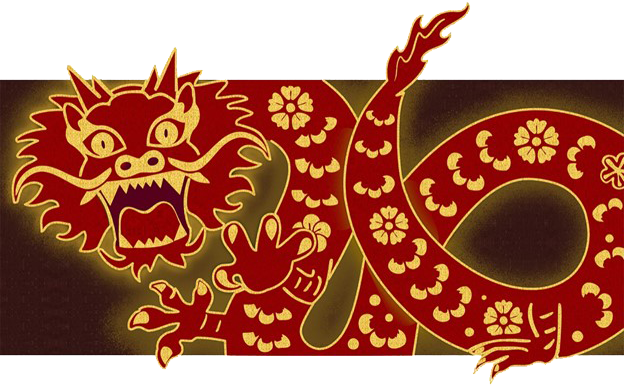Budo
By Christopher Caile
Budo means "martial way" and refers to those martial disciplines whose ultimate goal is spiritual, ethical and/or moral self-improvement. Thus while budo disciplines were (technically) based on the previous warrior arts (bujitsu), they developed a new emphasis, one that separates the martial spirit and mind from an external focus on war and killing (and service to others) and redirects them inwardly towards self-improvement. The characters "Bu" and "Do" in budo are rich in meaning and have many secondary meanings (see below). In earlier periods of Japanese history, however, budo had a different meaning. It was used to define the ethical and moral principles that motivate or guide the practice of bujitsu, the military way or doctrine. This military way later became known as bushido.
"Do" is the Japanese pronunciation the Chinese term Tao (for Taoism) meaning the way to suppress violence and return to the way of the universe. It is a composite of two characters integrated into one, the first signifying movement and the second head or chief. Combined, the characters have the meaning of the chief means of direct movement, or the main road, a term figuratively used to mean the way, as to enlightenment. Implied also are Taoist concepts of non-resistance, goal-lessness, and loss of ego (not surprisingly shared by Zen since the formation of Zen in China was derived from Indian meditative Buddhism strongly influenced by Taoism). But while Chinese Taoism developed strong otherworldly or religious connotations, the Japanese had a more practical, less abstract interpretation, one more focused on the pragmatic dimension of human relationships. This led to the concept of the way or road toward self-development. This could lead to a spiritual awakening, but to a Zen one of intuitive perception, insight and enlightenment.
"Do" martial disciplines were not practiced for fun or lightly undertaken. Training was rigorous, hard, austere – a long process of dedication and discipline. The focus was on the process, the internal fulfillment and joy of just doing rather than being goal oriented (such as a focus on winning). Emphasis was on learning through doing, not words. Ideas and concepts were seen as short lived and shallow. Real learning, it was believed, took time and was slowly accumulated from experience – as the body gained its own knowledge and reactions without the mind needing to knowing why. But the body could not freely move and react or be open to intuitive perception if emotions, fear and thoughts clogged the mind and confused perception. That's where "do" draws on Zen training to free the mind through development of no-mind (Mushin) and an unstaying mind, the mind that may glance at something but not stay (Fudoshin). The nature of unending study of "do" is summed up in the old story of a young disciple who approaches his Zen master and asks how long he will have to study Zen before he learns it. The master replies, "Until you die."
Budo Development & History: Bujitsu arts were perfected during a period of almost constant warfare in Japan stretching from the 8th to the 16th century. During this time "budo" referred to the ethical ideals, or ways of the warrior most popularly known as Bushido, and included such concepts as obedience, loyalty and respect. Budo as a system of fighting ways, however, evolved during the feudal period of peace that followed, the Tokugawa era (1600-1867) (better known as the Edo era), that preceded the modern era. To bolster stability the Tokugawa military authorities instituted a rigid class structure and system of political controls over is populous while externally the nation was isolated from foreign contact. But these measures could only mask deep currents of change (economic and military) that would shake the feudal system to its foundation and and spur the beginning of the modern age.
Economic power, once based on land (agriculture) and feudal relationships (rights to work land in return for obligations), was being challenged by the rise of a prosperous and strong and merchant classmate. At heart of this feudal structure was the professional warrior who provided service in return for stipends or the right to work land. But their role had changed and their military viability (power and predominance) was beginning to be called into question. Seeking to reduce the potential for violence, the government politically subdivided the bushi, and their efforts were re-directed into arts (as poetry, drama, tea ceremony) and education. Training in martial skills was tolerated but as huge numbers of bushi were transformed into bureaucrats, accountants and administrators (especially in urban areas), their motivation to train martial skills suffered. Another and more ominous challenge was rising on a technological level. Government conscripts with guns called into question the very viability and/or superiority of classical weapons and tactics. Moral was low. These changes led to efforts by some bushi, bolstered by strains of Confucian thought, to re-create the experience and preserve spiritual and ethical ideals of the past (classical warrior) but in new form (budo disciplines) and with a new emphasis – on serving the individual and society as a whole. See Classical Budo and Modern Budo for details of the content of budo.
About the Author Christopher Caile
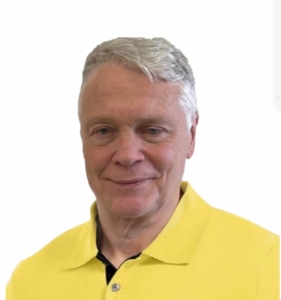
Screenshot
Christopher Caile is the Founder and Editor-In-Chief of FightingArts.com. He has been a student of the martial arts for over 65 years.
He first started in judo while in college. Then he added karate as a student of Phil Koeppel in 1959 studying Kempo and Wado-Ryu karate. He later added Shotokan Karate where he was promoted to brown belt and taught beginner classes. In 1960 while living in Finland, Caile introduced karate to that country and placed fourth in that nation's first national judo tournament.
Wanting to further his karate studies, Caile then hitch hiked from Finland to Japan traveling through Scandinavia, Europe, North Africa, the Middle East and South and Southeast Asia — living on 25 cents a day and often sleeping outside.
Arriving in Japan (1962), Caile was introduced to Mas Oyama and his fledgling full contact Kyokushinkai Karate by Donn Draeger, the famous martial artist and historian. Donn also housed him with several other senior international judo practitioners. Donn became Caile's martial arts mentor, coaching him in judo and introducing him to Shinto Muso-ryu under Takaji Shimizu.
Caile studied at Oyama's honbu dojo and also at Kenji Kurosaki's second Tokyo Kyokushinkai dojo. In his first day in class Oyama asked Caile to teach English to his chief instructor, Tadashi Nakamura. They have been friends ever since. Caile also participated in Oyama's masterwork book, "This Is Karate."
Caile left Japan with his black belt and designation as Branch Chief, the first in the US to have had extensive training in Japan directly under Oyama Sensei. As such, Oyama Sensei asked him to be his representative on visits to his US dojos to report on their status.
A little over a year later, Nakamura, Kusosaki and Akio Fujihira won an epic David vs. Goliath challenge match against Thailand's professional Muay Thai Boxers in Bangkok, Thailand, thrusting Kyolushinkai and Nakamura into national prominence.
Back in the US Caile taught Kyokushinkai karate in Peoria, Il while in college and later in Washington, DC. while in graduate school. Durimg this time Shihan Nakamura had moved to New York City to head Kyokushinkai's North American Operation.
In 1976 when Kaicho Tadashi Nakamura formed the World Seido Karate organization, Caile followed. Living then in Buffalo, NY, Caile taught Seido karate and self-defense at the State University of New York at Buffalo (SUNY Buffalo) for over 15 years where he also frequently lectured on martial arts and Zen in courses on Japanese culture.
Caile moved to New York City in 1999 to marry Jackie Veit. He is now an 8th degree black belt, Hanshi, training in Seido Karate's Westchester, NY Johshin Honzan (Spiritual Center) dojo. In Seido Caile is known for his teaching of and seminars on kata applications. He also produced a 14 segment video series on Pinan kata Bunkai currently available to Seido members.
Caile is also a long-time student and Shihan in Aikido. He studied in Buffalo, under Mike Hawley Shihan, and then under Wadokai Aikido's founder, the late Roy Suenaka (uchi deshi under Morihei Ueshiba, founder of Aikido and was Shihan under Tohei Sensei). In karate, Suenaka (8thdan) was also an in-house student of the Okinawan karate master Hohan Soken.
Having moved to New York City, Caile in 2000 founded this martial arts educational website, FightingArts.com. Twenty-five years later, in 2025, it underwent a major update and revision.
For FightingArts.com and other publications Caile wrote hundreds of articles on karate, martial arts, Japanese art, Chinese Medicine and edited a book on Zen. He also developed relationships with a cross section of leading martial arts teachers. Over the last four decades he has conducted extensive private research into karate and martial arts including private translations of the once secret Okinawan hand copied and passed on Kung Fu book, the Bubishi, as well as an early karate book by the karate master Kenwa Mabuni. He periodically returns to Japan and Okinawa to continue his studies and participate Seido karate events. In Tokyo he practiced (with Roy Suenaka Sensei) in a variety of aikido organizations with their founders – including private interviews and practices at the Aiki-kai Aikido Honbu dojo with the son and grandson of aikido's founder, Doshu (headmaster) Kisshomaru (an old uchi-deshi friend) and his son, Moriteru Ueshiba and in Iwama with Morihiro Saito. On Okinawa he studied Goju Ryu karate under Eiichi Miyazato, 10th dan founder of Naha's Jundokan, and also with Yoshitaka Taira (who later formed his own organization, who specialized in kata Bunkai. While there Caile also trained with Hohan Soken's senior student, Master Fusei Kise, 10 dan as well as with the grandson of the legendary karate master Anko Itosu.
Caile's other martial arts experience includes: Diato-ryu Aikijujitsu and Kenjitsu, kobudo, boxing, Muay Thai, MMA, Kali (empty hand, knife and bolo), study of old Okinawan Shoran-ryu & Tomari body mechanics, study of old Okinawan kata under Richard Kim, study of close quarter defense and combat, including knife and gun defenses, Kyusho Jitsu and several Chinese fighting arts including 8 Star Praying Mantis, Pak Mei (White Eyebrow), and a private family system of Kung Fu.
Caile is also a student of Zen as well as a long-term student of one branch of Traditional Chinese Medicine, Chi Kung (Qigong). As one of two senior disciples of Chi Kung master Dr. Shen (M.D., Ph.D.) Caile was certified to teach and practice. This led to Caile's founding of the The Chi Kung Healing Institute on Grand Island, NY. In Western NY, he also frequently held Chi Kung seminars, including at SUNY Buffalo and at the famous Chautauqua Institution in Chautauqua, NY. His articles on Chi Kung also appeared in the Holistic Health Journal and in several books on alternative medicine.
Caile holds a BA in International Studies from Bradley University and MA in International Relations with a specialty in South and Southeast Asia from American University in Washington, D.C. While in Buffalo, NY he also studied digital and analog electronics.
In his professional life Caile also worked in public relations and as a newspaper reporter and photographer. Earlier he worked in the field of telecommunications including Managing a Buffalo, NY sales and service branch for ITT. He then founded his own private telephone company. This was followed by creation of an electrical engineering company that designed and patented his concept for a new type of low-cost small business telephone system (which was eventually sold to Bell South). The company also did contract work for Kodak and the US space program. Simultaneously Caile designed and manufactured a unique break-apart portable pontoon boat.
Most recently Caile co-founded an internet software company. Its products include software suites with AI capability for control and management of streaming media, such as video and music, an all-in-one book publishing software product for hardcover, eBook and audio book creation and security software for buildings and government use.
For more details about Christopher Caile's martial arts, work experience and life profile, see the About section in the footer of this site.
Search for more articles by this author:
